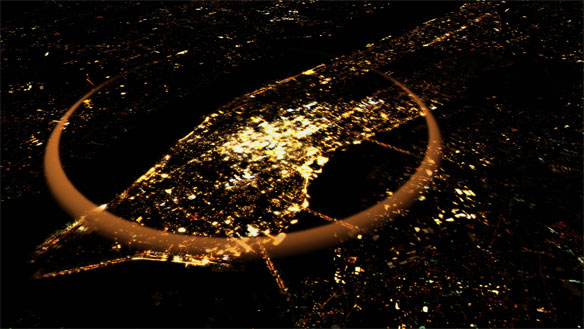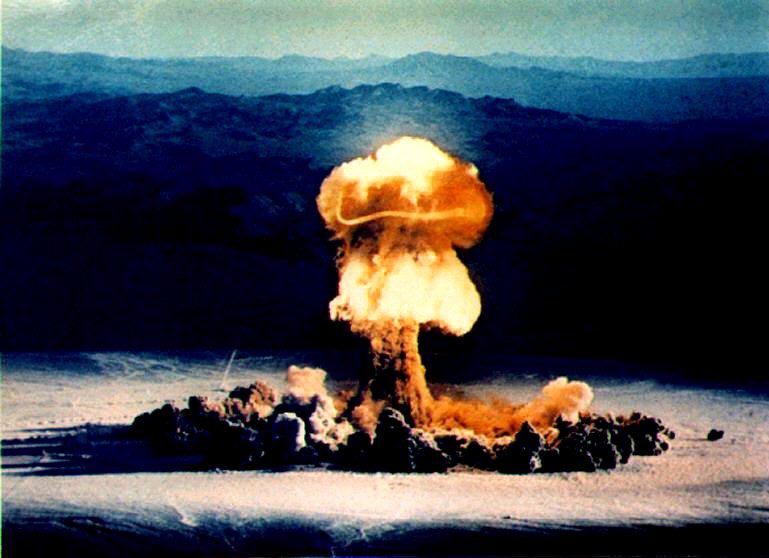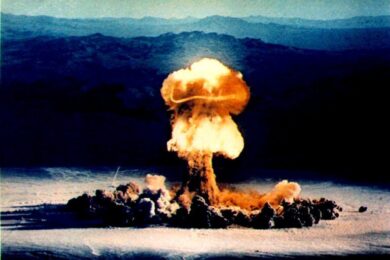The title of documentary Countdown to Zero, out on DVD this week, simultaneously refers to two things: the campaign to reduce the number of nuclear warheads on the planet to zero, and – conversely – the kind of sweaty-browed, hair-trigger missile launch sequence that might bring about the end of the world. The latter kind of cold war paranoia might seem charmingly retro these days, but the filmmakers revive these fears, arguing that with the advent of terrorism, the threat is greater than ever.
Campaign films like Countdown are a strange breed of documentary. They’re not quite journalistic investigations like Charles Ferguson’s Inside Job; not quite academic essays like Adam Curtis’s BBC work; nor do they explore conditions of moral uncertainty like films by Errol Morris or Alex Gibney. They are essentially feature-length advertisements for a progressive campaign: point-by-point arguments which attempt to enlist viewers to a cause.
Going to go see such a film in the cinema is like attending a rally (or on DVD, more like inviting a Tottenham Court Road chugger into your home for a PowerPoint presentation). They affirm your beliefs and make you feel on the right side of something important, but it’s hard to imagine someone who doesn’t already believe showing up in the first place – or having their mind changed if they did. However, whether the goal is conversion or just radicalising an existing base, by only presenting information in support of their cause, these films can be subtly manipulative in nature. So, is there ever such thing as benign propaganda?
The most successful campaign film, of course, is the excellent An Inconvenient Truth which could be credited with sparking much of the current vogue for green politics (at least in words, if not in actions). Although only extreme climate sceptics would dispute the general evidence behind Al Gore and David Guggenheim’s 2006 documentary, it could be argued that the film tends to present some very complex, multi-faceted phenomena as a simple and unified picture, at times using the power of suggestion to make correlations seem like cause and effect (the link between hurricanes and climate change, for example, was less certain than some of the other science).
But more importantly, the film used both sentimentality and fear to drive home its message. The nightmare scenarios in the film – sea levels rising by metres, polar bears drowning, lakes evaporating – are sometimes presented without supporting evidence and timescales (tens of years or hundreds of years?). We say this not to discredit the important message of the film, but to note the tactics at work.
Eschatological fears are also central to the presentation of Coundown to Zero. Compared to climate change, nuclear disarmament is a relatively straightforward issue since it doesn’t fit so easily into the media-perpetuated ‘red state / blue state’ narrative. In fact, it’s hard to picture an opponent to the film’s message – perhaps some hawkish think tank analyst, or a sleazy Nicholas Cage type arms dealer. Most people probably don’t like nuclear weapons but are blissfully unaware of the threat they still pose. Some of the most interesting scenes in this film involve people on the street not having the slightest clue which countries have nuclear weapons and how many are still active. But the film chooses to educate the viewer with horror-movie tropes and apocalyptic images – not unlike the kind of ‘kids-under-the-desk’, hyperbole featured in The Atomic Cafe (an excellent collection of often kitschy Public Service Announcements and archive footage from the nuclear era).
A strangely funny sequence shows an over-the-top, Keystone Cops montage illustrating how many nuclear missiles and bombs have been ‘misplaced’ or accidentally dropped out of the sky. The film, however, deliberately doesn’t clarify until later that nuclear bombs don’t explode just by dropping – they must be triggered. But there are plenty of more worrying examples of peacetime miscommunications and computer errors which had either side seriously hovering over the doomsday button. As one commenter points out, it’s a good thing Yeltsin wasn’t on the sauce that day.
The film launches early into discussions of highly enriched uranium on the black market, allowing your mind to concoct images of dirty bombs in suitcases, but intentionally saves the sober explanation of how bombs are made (surprisingly simple but still not exactly for hobbyists) until later in the film, after you’re already scared and suggestible. The film rightly highlights the democratisation of nuclear technology but conceals until the end the fact that it still takes thousands of centrifuges spinning for months or years to refine the uranium – an industrial operation which still more or less requires the complicity of a state. Regardless, stealing or buying pre-made bombs is still a very real threat.
The film assembles an impressive but occasionally eyebrow-raising roster of talking heads, including Valerie Plaim and other former CIA agents. But isn’t this the same CIA that failed to predict 9/11 and believed unequivocally that there were WMDs in Iraq? The same organisation that trained Bin Laden and whose cack-handed secret wars made countless enemies for the US? Why do they get to be “experts” now? How can the film talk to Robert McNamera, now an anti-nuclear activist, without discussing his roll in nuclear proliferation? And how can they not ask tough questions of former Pakistani president Pervez Musharraf?
It’s not until Tony Blair’s lying face appears that one thing becomes clear: the film never questions the premise of the War on Terror and if anything, lends its support. It was the same soothsaying (yellowcake, rogue states supplying nukes to terrorists, dirty bombs), generated by the Bush administration and haplessly parroted by the media, that led us into Iraq and the subsequent curtailing of civil liberties. Strange how the same fears can be used as PR for war or for disarmament.
The denouement is a very slick-looking diagram of how New York would be destroyed by a bomb in Times Square, predictably set to Radiohead’s ‘The Reckoner’ – pushing emotional buttons as well as stoking fears. The scant solutions offered at the end include securing existing uranium reserves (which the film earlier showed to be nigh-on impossible), non-proliferation treaties and destruction of existing warheads – all of which seem hopelessly insufficient after all the woe-is-us scare tactics.

Again, it’s not that there are factual inaccuracies in this film (these dangers are very real), just that it’s shrewdly constructed to make possibilities seem like certainties – extreme examples are cherry-picked, information is withheld, and the viewer is left to fill in the nightmarish blanks. This is not to say that more traditional docs by Morris, Moore or Ferguson don’t have agendas, or that they’re any less manipulative for affecting an air of objectivity; just that they generally don’t attempt to manipulate the viewer with Crimewatch-style dramatics.
On the other hand, maybe scare tactics are justified. We have a whole new generation of young people born after the fall of the Berlin wall for whom the threat of nuclear holocaust is a historical curiosity; for whom Threads is a sci-fi film, not a public service announcement. When the causes are as worthy and urgent as nuclear arms reduction and climate change, how far should you go to convince people? Can you actually channel this fear or could it just as easily provoke witch hunts and warmongering instead of disarmament?
Rather than looking only at the tools of mass destruction, why not examine the power structures which make them possible? The excellent documentary Why We Fight by Eugene Jarecki asks important open-ended questions about the military industrial complex and the interests which might be behind a programme of perpetual war. Another nuclear doc The Strangest Dream chronicles the life of anti-nuclear activist James Rotblat, who quit the atomic project in protest, raising important issues about the political and moral responsibilities of scientists. Adam Curtis’ The Power of Nightmares of course, examines how the fear of terrorism can be used by politicians to maintain power. How can we solve the problem of nuclear war without understanding the root problem of why we all want to kill each other in the first place?
It should be remembered, however, that the goal of campaign films aside from their argument is generating money – your ticket is a donation to the cause and the campaign’s strength is measured partly by the film’s audience. In a way, Countdown to Zero succeeds merely by existing and prompting discussion of a topic which has been out of the spotlight for too long. It can accomplish this because film is such a powerful, pervasive medium. The combination of sweeping images, insistent experts, dancing graphics and Thom York’s warbling can be intoxicating – but that’s exactly why, in an age where partisan punditry has replaced journalism and fear dominates politics, we should demand more depth from our documentaries.
Film criticisms aside, to get involved with this very important campaign, Global Zero, please click here for more information.
Countdown to Zero is out now on DVD from Dogwoof. The Strangest Dream, also from Dogwoof, is available from the iTunes store from next week.



